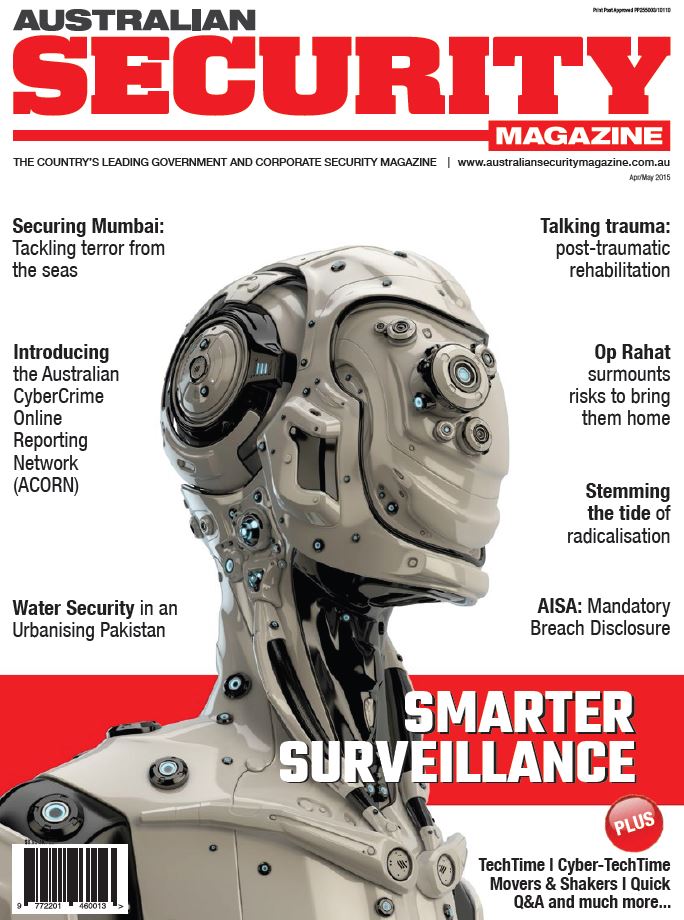
 By Chris Cubbage
By Chris Cubbage
Executive Editor, Australian Security Magazine.
“For a long time many believed that there would be an automatic adjustment and counted on a rapid increase in the wages of the emerging nations, on our advances in technology and the costs of transport preventing disruption. But this reassuring analysis is out of date.” – Laurent Fabius
Anyone with an avid interest in global, national, as well as human security trends, even generally, will appreciate these trends have an interdependence and there is often few degrees of separation between the relationships. To make the point, on the approach to the Centenary commemoration of ANZAC Day, teenagers as young as 14 were arrested in Melbourne and the UK over an alleged terror plot. Their behaviour is alleged to be directly influenced by the events in the Middle East. In the same way, are the attacks by Boko Haram, Al Shabaab and Da’esh.
It is prudent for security professionals, therefore, to remain aware of the ‘domino’ fault line conflicts in the Middle East and North Africa, along with the cultural clashes that can trend in a multi-cultural and online Australia. Though the clouded contrast of reality and perception becomes increasingly clear when the details are sought out, the term ‘crisis’ is used more by ‘politicians’ than anyone else and remains the catalyst word for generating ‘action’ or indeed, worse still, ‘inaction’.
In April 2015, the Australian Prime Minister ‘launched’ a ‘taskforce’ to develop a ‘report’ into the ‘Ice Epidemic’ which has, it would be apparent to some, suddenly and unexpectedly reached ‘crisis’ levels in regional and city communities across the country.
I have to agree with Fiona Patten, MLC Member for Northern Metropolitan who said in response “The Prime Minister is simply churning out the same tired old strategy to battle the so called ‘ice epidemic’. Whilst I applaud any effort to reduce harmful drug use, what we need is drug law reform and to be looking at the root causes of the issue, not spouting military style rhetoric and appointing an ‘ice cop’. We need reform – not enforcement,” concluded Ms Patten.
Almost one in ten Australians have tried methamphetamine and around half a million Australian adults are current users of the drug.
‘Ice’ causes users to suffer from psychotic episodes and become violent and unpredictable. April 2015 also saw the release of a report on mental health reform, commissioned by the Federal Government and recommended redirecting more than $1 billion in funding from acute hospital care to community-based mental health services. The Federal Health Minister rejected this proposal. The report found “major deficiencies in the response [received]by many of those seeking help for suicidal thinking, attempts or bereavement” and urged a “radical rethink of responses” to mentally ill people seeking help.
The commission found that there was substantial funding within the mental health system but that it was not distributed efficiently, effectively or fairly and it recommended redirecting money from hospital to community based care from 2017.
There are about six suicides in Australia each day, or just over 2,400 deaths per year. Anecdotally, suicide rates would be a reasonable indicator of the level of mental health issues across the community. Mental health issues include those who suffer from psychotic episodes and some behaviour can be violent and unpredictable. As recently demonstrated by the co-pilot responsible for Germanwings Flight 9525 which crashed in the French Alps. Co-pilot Andreas Lubitz hid an illness from his employers, say German prosecutors, who is accused of deliberately killing 148 people in a suicide mission.
April 2015 also hosted discussion around the ‘pretty dull’ Federal Budget 2015/2016. For our business community and the nation’s employers, the call for urgent reform has been led by Kate Carnell AO, Chair of the Australian Chamber of Commerce and Industry. A Joint Statement from Business Leaders on Boosting Australia’s Competitiveness projected government spending will surge to 31 per cent of GDP by 2055 and our net debt will swell to $2.6 trillion must be a major wake-up call to today’s generation of political leaders and the entire community.
Coinciding to this warning, the world’s top finance leaders have warned that currency volatility, low inflation and high debt levels threaten to undermine an already uneven global economic recovery. The International Monetary Fund warning is an implicit acknowledgment of the failure across the globe to enact longer-lasting structural overhauls to major economies after years of relying on short-term spending and other temporary stimulus programs.
Without intending to be overly pessimistic, there is complex and overlapping issues from international, regional, national and community trends, like illicit drugs in our communities and the links to transnational organised crime, or the influence of the Islamic State on misaligned youth and causing them, allegedly, to plot to target Australia’s commemoration of our brave war dead, or the global economic storms causing local business disruptions and short-term rises in unemployment and debt stress.
Even Australia’s Federation is being threatened by GST disputes between the States. The security risk environment, coupled with unpredictable government, challenging business environment and imbedded social challenges being left untreated, such as mental illness and drug abuse, is clearly developing as a challenge that will require a holistic approach and which in some measure, with some of the threats, such as terrorism, is already tinkering between high and imminent.
Once again, we are in a period of needing to be prepared for the worst, even if it is approaching gradually. But are we?
In this issue of the Australian Security Magazine we examine some of the longer term regional issues emerging, such as the water crisis in Pakistan, a nuclear power, and the protection of Mumbai from future, water borne, terror attacks. We also introduce Anooshe Mushtaq with her article on ‘Stemming the Tide of Radicalisation’ and articles on trauma, security professionalism and Data Centre blast protection. Our cyber security features include mandatory breach disclosures and we introduce the ACORN (Australian Cybercrime Online Reporting Network), accompanied by our Women in Security feature on Karen Stones, the AISA Information Security Professional of the Year.
As always, we provide some thought provoking material and there is so much more to touch on. Stay tuned with us as we continue to explore, educate, entertain and most importantly, engage.
Click here to read the latest issue of Australian Security Magazine




